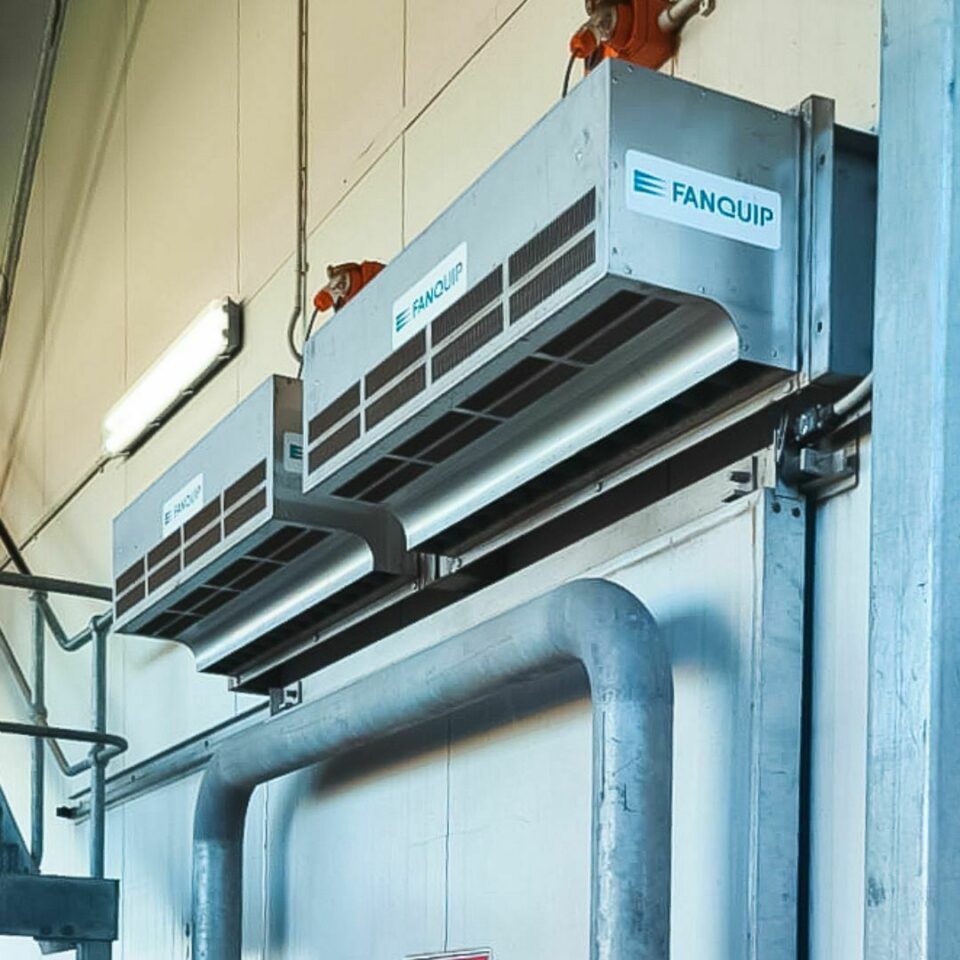Running an industrial or commercial facility comes with its fair share of challenges—one of the biggest being energy efficiency. Whether you’re heating a warehouse in winter or keeping a shopfront cool in summer, energy bills can quickly spiral out of control, especially if your building has doors that are frequently open.
That’s where air curtains come in. These devices are often installed above doorways and create a powerful stream of air that acts as a protective barrier. While they’re known for keeping out dust and insects, one of their greatest advantages is their ability to dramatically reduce energy costs.
What Is an Air Curtain?
An air curtain is a fan-powered device fitted above entrances or loading bays. It blows a high-velocity stream of air downwards across the doorway, forming an invisible shield between the indoor and outdoor environments.
Unlike physical doors, this barrier doesn’t interrupt foot traffic or operations—but it does block unwanted air exchange. That means warm air stays inside in winter, and cool air is retained in summer.
How Air Curtains Reduce Energy Loss
Every time a door opens, there’s a risk of conditioned air escaping and external air flooding in. In busy environments—such as warehouses, factories, supermarkets, or distribution centres—these temperature fluctuations force heating or cooling systems to work harder, which drives up energy usage.
An air curtain helps to seal the doorway without closing it, creating a pressure barrier that minimises air transfer. This reduces the strain on HVAC systems and keeps internal temperatures more stable.
The benefits?
- Lower heating and cooling bills
- More consistent climate control
- Reduced wear and tear on HVAC equipment
Real-World Energy Savings
Businesses that install air curtains often report energy savings of up to 30%, depending on door size, usage, and climate conditions. These savings can translate into a fast return on investment, particularly in facilities with large open entrances or frequent footfall.
In addition, air curtains contribute to a smaller carbon footprint, helping businesses meet sustainability targets and reduce their environmental impact.
Additional Advantages
While energy efficiency is a major benefit, air curtains also offer:
Greater Comfort
By preventing cold draughts or hot air from entering, air curtains help maintain a comfortable working environment for staff and visitors alike.
Operational Efficiency
Doors can remain open for easy access, without sacrificing temperature control. This keeps logistics, deliveries, and foot traffic flowing smoothly.
Improved Indoor Air Quality
Air curtains also block dust, insects, fumes, and pollution—further reducing the need for air purification and keeping interiors cleaner.
Choosing the Right Air Curtain
To get the most energy savings, it’s important to choose the right model for your facility. Consider:
- The height and width of the doorway
- The climate in your region
- The volume of traffic through the entry point
- Whether the space is heated, cooled, or both
Opt for industrial-grade units with variable speed settings, energy-efficient motors, and weather-resistant construction for best results.
Final Thoughts
Air curtains are a smart investment for any facility looking to cut energy costs without compromising on accessibility or comfort. They’re discreet, low-maintenance, and highly effective at controlling air movement—making them an essential tool in any energy-saving strategy.
If your building has doors that are frequently open, installing an air curtain could make a significant difference to your bottom line.
Enhance Energy Efficiency with Fanquip Air Curtains
Don’t let open doors drive up your energy costs or compromise your indoor environment. Fanquip offers a powerful range of industrial-grade air curtains engineered for performance, durability, and savings. Maintain climate control, reduce operational expenses, and improve workplace comfort with a solution tailored to your industry. Contact Fanquip today to find the perfect air curtain for your facility.
